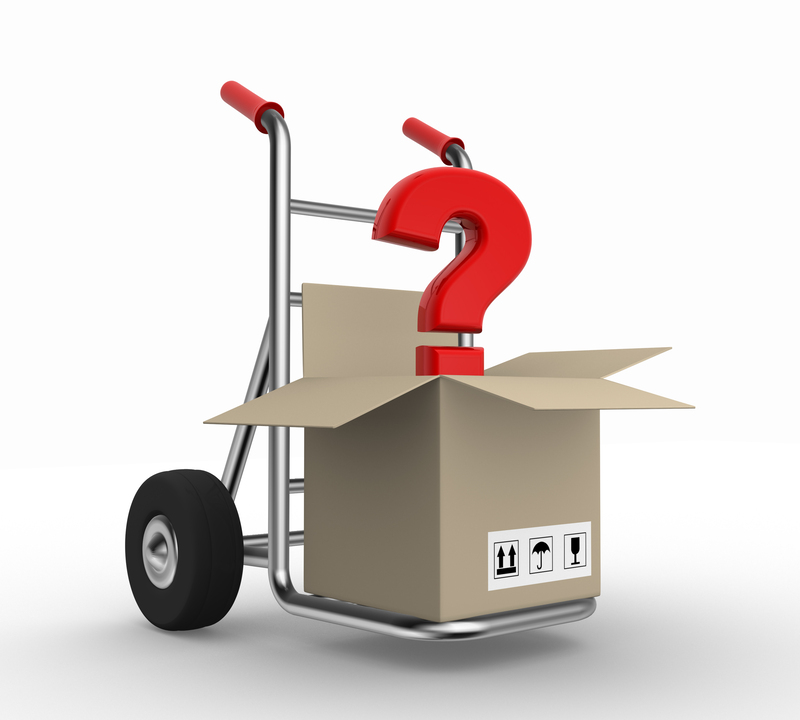Save Time and Effort Moving Your Mattress and Bed: Ultimate Guide
When it's time to change homes, rearrange your living space, or invest in a new mattress and bed frame, many people shudder at the thought of moving these bulky, unwieldy items. However, with the right techniques and preparation, you can save time and effort moving your mattress and bed, ensuring a smooth, hassle-free experience. In this comprehensive guide, you'll discover expert tips, packing advice, and insider tricks to move your bed and mattress like a pro.

Why is Moving Your Mattress and Bed Challenging?
- Weight and Size: Mattresses and beds are heavy, large, and often require multiple people to lift safely.
- Shape: Mattresses are bulky and floppy, making them difficult to maneuver through tight spaces.
- Risk of Damage: There's a risk of damaging the mattress, bed frame, or surrounding walls and doors when moving them incorrectly.
- Time Consumption: Disassembling, packing, and moving bed components is time-intensive without proper planning.
Essential Equipment for Moving Your Bed and Mattress Effortlessly
Before you begin the process, gather these must-have tools and supplies to streamline your bed and mattress move:
- Mattress bag or cover - Protects against dirt, moisture, and tearing.
- Moving straps and rope - Helps with lifting and maneuvering.
- Furniture dolly - Especially useful for heavy bed frames and box springs.
- Allen wrenches/screwdrivers - For disassembling the bed frame.
- Plastic zip bags - To keep screws, nuts, and small hardware organized.
- Packing tape and labels - For sealing mattress bags and marking bed parts.
Tip: Always check if your mattress company offers moving kits or protective covers designed specifically for your model.
Step-by-Step Process to Move Your Mattress and Bed Quickly
Step 1: Remove Bedding and Accessories
Strip off all sheets, comforters, duvets, pillows, and mattress toppers. Wash or pack them separately in clean bags to prevent dirt accumulation.
Step 2: Disassemble the Bed Frame
Carefully disassemble your bed frame. Follow the manufacturer's instructions, if available. Place all hardware (screws, bolts, brackets) in a labeled zip bag for easy reassembly. Large wooden or metal side rails should be set aside for careful transport.
Step 3: Protect Your Mattress
Slide your mattress into a specially designed mattress moving bag or heavy-duty plastic cover. This protection is essential to keep your mattress clean and dry throughout the move.
- Tape the ends of the bag securely shut.
- If you have a memory foam or latex mattress, avoid bending it excessively, as this can cause damage.
Step 4: Secure and Move the Mattress
Stand your mattress on its side for easier maneuverability through doorways and hallways. Use moving straps for better grip and support. With two people, carefully walk the mattress out to the transport vehicle, keeping it as upright as possible.
Step 5: Move the Bed Frame and Accessories
Wrap frame pieces, especially wooden elements, in moving blankets or bubble wrap to prevent scratches and dings. Use a dolly for bulky or heavy parts. Make sure all hardware is accounted for and attached securely to the corresponding piece, or kept together in a clearly marked bag.
Step 6: Loading Into the Vehicle
- Lay the mattress flat in the moving truck to prevent sagging or folding.
- Stack light, soft items on top if needed, but never place heavy items on the mattress, as this can cause indentations.
- Secure the bed frame and mattress with straps to minimize shifting during transit.
Professional Services: Save Time Moving Mattresses and Beds
Hiring a professional moving company is the easiest way to save time and effort moving your bed and mattress. Professional movers are experienced in handling delicate and bulky household items, and they bring their own tools, padding, and protective gear.
- White-glove service: Some companies offer complete disassembly, packing, transport, and assembly at your new location.
- Specialized mattress moving: Movers use mattress carriers and covers to keep your sleep surfaces clean and undamaged.
- Insurance: Professional movers provide insurance, giving peace of mind in case of accidental damage.
While professional services come with a cost, they can dramatically reduce moving time and physical strain, especially for king or queen size beds and high-end mattresses.
DIY vs. Professional Mattress and Bed Moving: What's Right for You?
| DIY Move | Professional Service |
|---|---|
|
|
Factors to Consider:
- Size and weight of your mattress and bed
- Distance of the move
- Number of flights of stairs or tight corners
- Your budget and available manpower
- Time constraints
How to Move Memory Foam, Hybrid, and Spring Mattresses Safely
Not all mattresses are made equal. Here are special tips to save time and effort moving different types of mattresses:
Memory Foam Mattresses
- Always keep the mattress flat and avoid folding or sharply bending it.
- Use a strong, well-fitted mattress cover to prevent stretching or tears while moving.
- Memory foam is heavier than traditional spring mattresses, so two or more people are often needed.
Hybrid Mattresses
- Handle carefully--they combine foam and springs, making them weighty and less flexible.
- Don't drag the mattress, as this could damage the foam layers.
Innerspring Mattresses
- These are generally more rigid and can be stood up more easily during transport.
- If possible, tie seams to keep the coils from shifting.
Packing and Moving Bed Frames
Bed frames can be even trickier than mattresses, especially ornate or adjustable models.
- Take photos during disassembly to serve as a reference for reassembly.
- Label each part using masking tape or stickers (headboard, footboard, side rails, slats).
- Wrap fragile components (finials, posts, slats) in bubble wrap or thick blankets.
- Keep tools handy at both ends of the move for quick assembly/disassembly.
Save Time and Effort Moving a Bed: Pro Strategies
- Plan your route: Measure doorways, hallways, and staircases in advance for a smooth exit and entry.
- Clear obstacles: Remove rugs, decorations, and small furniture from your path before you start moving.
- Work methodically: Pack and load in a logical sequence--first accessories, then the bed frame, then the mattress.
- Use teamwork: Assign roles--one person steers the mattress or bed frame, another supports and lifts.
- Stay safe: Bend knees, keep your back straight, and avoid twisting, especially with heavy mattresses.
Mattress and Bed Moving Mistakes to Avoid
- Skipping the protective cover: This can leave your mattress vulnerable to stains, moisture, and damage.
- Underestimating weight: Even "light" mattresses can be awkward and require help--never lift alone.
- Failing to secure in transit: Unsecured beds and mattresses can shift or get crushed in the moving truck.
- Losing hardware: Always place screws, nuts, and bolts in labeled bags--losing these can delay reassembly.
- Improper tools: Attempting to disassemble a frame without the right tools can cause damage.
Store Your Mattress and Bed for Short or Long-Term Moves
If you need to store your mattress or bed frame before moving them into their new home:
- Store flat: Avoid standing mattresses on the side for extended periods, as this can cause deformation.
- Climate control: Opt for climate-controlled storage to prevent mold and moisture buildup.
- Avoid stacking: Don't place heavy items on top of your mattress or delicate bed parts.
Eco-Friendly Mattress and Bed Moving Tips
- Use reusable mattress bags instead of plastic wrap.
- Donate or recycle old mattresses instead of disposing in a landfill.
- Use reusable moving pads and blankets for bed frames and headboards.
Final Checklist: Save Time and Effort Moving Your Mattress and Bed
- Gather all moving supplies and protective covers in advance.
- Disassemble and label all frame components carefully.
- Bag all hardware and keep tools handy for reassembly.
- Enlist enough help or hire professionals as needed.
- Pack, load, and transport in a logical, safe sequence.
- Double-check paths, doorways, and measurement constraints.
- Store your mattress and bed thoughtfully if needed.

Frequently Asked Questions About Mattress and Bed Moving
How do I move a king-size mattress by myself?
It's not recommended to move a king-size mattress alone. These mattresses are heavy and unwieldy. At minimum, use sturdy straps, a mattress bag, and a moving dolly, and ask for assistance from a friend or professional mover.
Can you fold a memory foam mattress for moving?
Some memory foam mattresses can be carefully folded for a short time, but consult the manufacturer's recommendations. Extended folding or tight rolling may damage the foam and void the warranty.
How can I protect my bed frame during a move?
Wrap each part in moving blankets or bubble wrap. Secure all loose parts, and transport in a way that prevents rattling and scratching during the move.
Is it cheaper to move a mattress or buy a new one?
If your mattress is high-quality and relatively new, it's usually more economical--and better for the environment--to move it. For older, worn-out mattresses, consider recycling and purchasing a new one at your destination.
Conclusion: Moving Your Mattress and Bed Made Easy
Moving your mattress and bed doesn't have to be stressful or strenuous. By following this step-by-step guide and leveraging the right mattress and bed moving techniques, you can save both time and effort while ensuring your valuable bedding arrives at your new home safe, clean, and ready for a great night's sleep. Whether doing it yourself or hiring professionals, proper preparation truly pays off. Plan ahead, follow best practices, and your bed and mattress move will be smooth and successful!
Ready to enjoy a seamless move? Use these pro tips and make your next mattress and bed relocation easier than ever!



